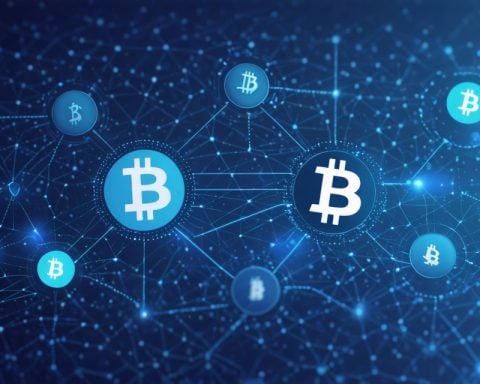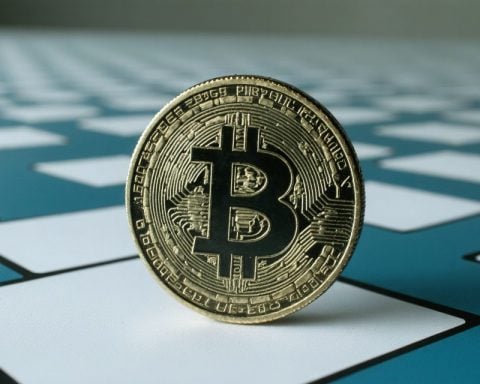- The Pi Coin Mainnet is a key milestone for cryptocurrency, offering a mobile-first approach designed by Stanford graduates.
- Focus on inclusivity and energy efficiency sets it apart, using the Stellar Consensus Protocol to ensure low energy consumption and wide participation.
- The Pi Network promotes community involvement, giving users a stake in development, enhancing user engagement and ownership.
- With a large user base, it opens doors for integration into global financial systems, potentially transforming digital transactions.
- The project highlights the future of digital currencies by prioritizing accessibility, sustainability, and community-driven growth.
The launch of the Pi Coin Mainnet marks a pivotal moment in the world of cryptocurrency. Developed by a team of Stanford graduates, the Pi Network initially aimed to create a user-friendly, mobile-first cryptocurrency experience, allowing anyone with a smartphone to join the digital currency movement. Now, with the advent of its mainnet, the Pi Coin is stepping into the global arena of cryptocurrencies with promises of decentralization and accessibility.
What makes the Pi Coin Mainnet different from other cryptocurrencies is its emphasis on inclusivity and energy efficiency. Unlike Bitcoin’s energy-intensive mining process, the Pi Network employs a consensus algorithm based on the Stellar Consensus Protocol, which is designed to be both scalable and energy-efficient. This approach not only makes it more environmentally friendly but also ensures that users from all walks of life can participate in the network without expensive hardware.
As the mainnet goes live, the team behind Pi is optimistic about its potential to reshape the landscape of digital currency. The project’s community-driven ethos ensures that members have a voice in the network’s development, fostering a sense of ownership and engagement among its users. Furthermore, the Pi Network’s large user base offers unparalleled opportunities for integration into global e-commerce, financial transactions, and beyond.
For cryptocurrency enthusiasts, the Pi Coin Mainnet is not just another digital currency; it’s a glimpse into the future of cryptocurrencies, where accessibility, sustainability, and community are at the forefront. With its eye on the broader adoption of blockchain technology, Pi Coin is poised to become a significant player in the digital economy’s evolution.
Why Pi Coin Could Be the Future of Sustainable Cryptocurrency
What are the Key Innovations of Pi Coin Mainnet?
Pi Coin Mainnet brings several innovations to the table, setting it apart from traditional cryptocurrencies. The most notable innovation is its use of the Stellar Consensus Protocol, which allows for energy-efficient and scalable operations. This makes Pi Coin environmentally sustainable compared to energy-heavy currencies like Bitcoin. Additionally, Pi Coin’s mobile-first approach democratizes access, allowing anyone with a smartphone to mine coins without needing specialized hardware. This accessibility is further enhanced by the network’s strong community involvement, where users can influence development through governance structures.
How Does Pi Coin Ensure Security and User Trust?
Security and user trust are critical components of any successful cryptocurrency. Pi Coin employs advanced cryptographic techniques to ensure transaction security and uses a decentralized model that enhances network resilience against attacks. Users participate in the network’s security protocols, such as verifying transactions and maintaining accounts, which increases overall trust. Furthermore, Pi Network has a strict know-your-customer (KYC) process, bolstering its legitimacy and compliance with international regulations.
What Are the Potential Use Cases and Limitations of Pi Coin?
Pi Coin has various potential use cases, ranging from facilitating microtransactions to integrating with global e-commerce platforms. Its low transaction fees and scalability make it attractive for everyday purchases, while its strong community supports its use in crowdfunding and social endeavors. However, a significant limitation remains its current limited accessibility on cryptocurrency exchanges, which may hinder widespread adoption. Additionally, while the network is energy-efficient, it needs to establish more concrete partnerships in the financial sector to realize its full potential.
For more information, visit the Pi Network website to explore the project’s roadmap, ecosystem details, and user guidelines.
This insightful analysis of Pi Coin demonstrates why its unique features could lead to large-scale adoption within the digital economy, marking a significant step towards a more inclusive and environmentally sustainable cryptocurrency landscape.



















